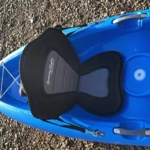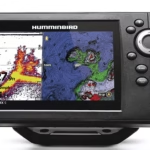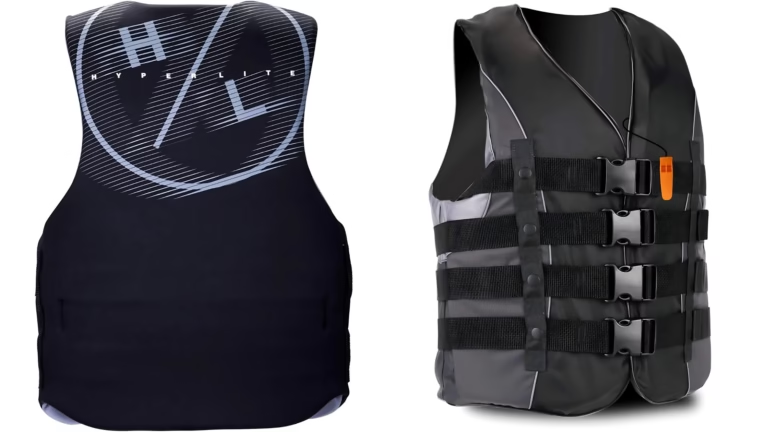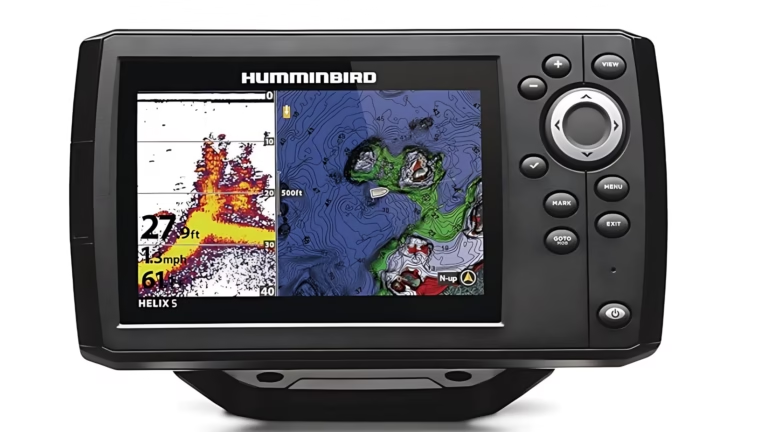Choose the right kayak paddle size based on your height and kayak width. Proper paddle length enhances performance and comfort.
Selecting the ideal kayak paddle size is crucial for an enjoyable paddling experience. An appropriately sized paddle reduces strain and maximizes efficiency. Consider your height and the width of your kayak to determine the best fit. A shorter paddle may be suitable for narrower kayaks or paddlers with shorter torsos.
Conversely, taller paddlers or those with wider kayaks may require longer paddles. Evaluating these factors ensures you select a paddle that complements your kayaking style and physical characteristics. Choosing the right paddle size significantly improves your overall kayaking experience.
Introduction To Kayak Paddles
Choosing the right kayak paddle size is crucial for a comfortable and efficient paddling experience. In this section, we will explore the basics of kayak paddles and why selecting the proper size matters.

Importance Of Paddle Size
The size of your kayak paddle affects your performance on the water. A paddle that’s too long or too short can make paddling harder and less enjoyable. Ensuring the correct size enhances your paddling efficiency and reduces fatigue. Here are some key points to consider:
- Efficiency: Proper paddle size helps you move through the water smoothly.
- Comfort: The right size reduces strain on your arms and shoulders.
- Control: Correct paddle size offers better control of your kayak.
Common Misconceptions
There are several misconceptions about kayak paddle sizes. Let’s debunk some of them:
- One Size Fits All: Many think one paddle size works for everyone. This is not true. Paddles must be chosen based on your height and kayak width.
- Longer is Better: A longer paddle isn’t always better. It can cause more drag and strain.
- Shorter is Easier: A shorter paddle might seem easier, but it can lead to inefficient strokes.
Choosing the right kayak paddle size is about finding a balance. Consider your height, kayak width, and paddling style.
Factors Influencing Paddle Size
Choosing the right kayak paddle size is essential for a comfortable kayaking experience. The correct paddle size ensures efficiency and reduces fatigue. Several factors influence the paddle size, including the paddler’s height and the kayak’s width.
Paddler’s Height
The paddler’s height is a crucial factor in selecting the right paddle size. Taller paddlers need longer paddles, while shorter paddlers need shorter ones.
| Paddler’s Height | Paddle Length (cm) |
|---|---|
| Under 5’5″ | 210-220 |
| 5’6″ to 5’11” | 220-230 |
| 6’0″ and above | 230-240 |
Kayak Width
The width of your kayak affects the paddle size. A wider kayak needs a longer paddle for effective strokes.
| Kayak Width | Paddle Length (cm) |
|---|---|
| Under 23″ | 210-220 |
| 24″ to 28″ | 220-230 |
| Over 28″ | 230-240 |
Both the paddler’s height and the kayak width play vital roles. Use the above tables to find the right paddle size for your needs. Ensure comfort and efficiency on the water with the correct paddle size.
Different Types Of Paddles
Choosing the right kayak paddle size is crucial for your kayaking experience. Different types of paddles serve different purposes. Understanding each type helps you make an informed decision.
Touring Paddles
Touring paddles are designed for long-distance paddling. They are lightweight and efficient. These paddles often have a longer blade. This helps in smooth and powerful strokes. Touring paddles are ideal for open water and calm conditions. They offer comfort for extended paddling sessions.
Key Features:
- Lightweight materials
- Longer blade design
- Ergonomic grip
Touring paddles come in various lengths. This depends on your height and kayak width. Use the table below to find the right length:
| Kayaker Height | Kayak Width | Recommended Paddle Length |
|---|---|---|
| Under 5’5″ | Under 23″ | 210-220 cm |
| 5’5″ to 6’0″ | 23″ to 28″ | 220-230 cm |
| Over 6’0″ | Over 28″ | 230-240 cm |
Whitewater Paddles
Whitewater paddles are built for strength and durability. They have a shorter and wider blade. This provides quick and powerful strokes. Whitewater paddles are ideal for fast-moving rivers. They help you navigate through rapids easily.
Key Features:
- Durable materials
- Shorter blade design
- Strong grip
Whitewater paddles come in shorter lengths. This allows for quick maneuvering. Use the table below to find the right length:
| Kayaker Height | Recommended Paddle Length |
|---|---|
| Under 5’5″ | 194-200 cm |
| 5’5″ to 6’0″ | 200-205 cm |
| Over 6’0″ | 205-210 cm |
Measuring The Right Paddle Length
Choosing the right paddle length is crucial for a good kayaking experience. A paddle that’s too long or too short can make paddling difficult. To find the perfect fit, you need to measure the right paddle length.

Using A Paddle Size Chart
A paddle size chart can help you find the correct paddle length. These charts are based on your height and kayak width. Here’s a simple table to guide you:
| Height | Kayak Width | Paddle Length |
|---|---|---|
| Under 5’5″ | Under 23″ | 210 cm |
| 5’6″ – 5’11” | 24″ – 28″ | 220 cm |
| 6’0″ and above | Over 28″ | 230 cm |
Refer to this chart to select a suitable paddle length. This method is quick and easy.
Diy Measurement Techniques
If you prefer a hands-on approach, try DIY measurement techniques. You can measure
Material And Weight Considerations
Choosing the right kayak paddle size involves various considerations, including material and weight. These factors can significantly impact your paddling experience. Different materials offer unique benefits and drawbacks. Let’s explore the differences between aluminum and carbon fiber paddles and their impact on performance.
Aluminum Vs. Carbon Fiber
Aluminum paddles are typically more affordable. They are durable and can withstand rough conditions. However, they are heavier compared to other materials. This can lead to fatigue during longer paddling sessions.
Carbon fiber paddles are lightweight and easy to handle. They provide excellent performance and reduce fatigue. But, they are usually more expensive. They are also less durable than aluminum, especially in rocky areas.
| Material | Advantages | Disadvantages |
|---|---|---|
| Aluminum |
|
|
| Carbon Fiber |
|
|
Impact On Performance
The weight of your paddle directly affects your performance. A lighter paddle, like a carbon fiber one, allows for longer paddling without tiring your arms. This can be crucial for long-distance kayaking or competitive paddling.
On the other hand, an aluminum paddle’s durability can be beneficial for beginners or those kayaking in rough waters. The added weight can also provide better control in strong currents.
Ultimately, balancing material and weight considerations with your kayaking needs will help you choose the right paddle size.
Blade Shape And Size
Choosing the right kayak paddle size is crucial for an enjoyable kayaking experience. One important factor is the blade shape and size. These aspects affect your paddling efficiency and comfort.
High-angle Vs. Low-angle Blades
High-angle blades are wide and short. They suit aggressive paddling. Use them for fast rivers and strong currents. They offer powerful strokes and quick turns.
Low-angle blades are long and narrow. They fit relaxed paddling. Use them for calm lakes and slow rivers. They provide smooth strokes and reduce strain.
Surface Area Implications
The surface area of the blade affects your paddling power and endurance. Larger blades have more surface area. They generate more power per stroke. This can tire you quickly. Smaller blades have less surface area. They are easier to manage. They offer less power but more endurance.
| Blade Type | Surface Area | Best For |
|---|---|---|
| High-Angle | Large | Fast rivers, strong currents |
| Low-Angle | Small | Calm lakes, slow rivers |
Consider your paddling style and water conditions. This helps in choosing the right blade shape and size.
Adjustable Vs. Fixed Length Paddles
Choosing the right kayak paddle size is crucial for your comfort and performance on the water. One important decision is between adjustable and fixed length paddles. Each type has its own benefits and drawbacks. Understanding these can help you make an informed choice.
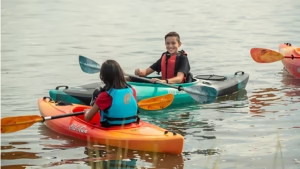
Pros And Cons
| Type | Pros | Cons |
|---|---|---|
| Adjustable Length Paddles |
|
|
| Fixed Length Paddles |
|
|
Best Use Cases
Choosing between adjustable and fixed length paddles largely depends on your specific needs and preferences.
- Adjustable Length Paddles are ideal for those who kayak in varying conditions. If you share your paddle with others, the adjustable type is a great choice.
- Fixed Length Paddles are best for those who prioritize weight and durability. If you have a consistent kayaking style and prefer a lighter paddle, go for the fixed length.
Expert Tips For First-time Buyers
Choosing the right kayak paddle size can be tricky for beginners. The right paddle size ensures comfort and efficiency. Here are some expert tips for first-time buyers.
Test Before You Buy
Always test the paddle before buying. Visit a store with demo paddles. Try different lengths to see what feels best. A good fit will reduce fatigue and improve performance.
Check for ease of movement. Your paddle should not be too long or too short. Test paddles in the store or on the water if possible.
Seek Professional Advice
Ask for professional advice if unsure. Speak with store staff or kayak instructors. They have experience and can recommend the best paddle size.
Bring your kayak details. Share your height and paddling style. Professionals can use this information to suggest the right paddle.
Maintenance And Care
Proper maintenance and care for your kayak paddle ensure its longevity. A well-kept paddle enhances your kayaking experience. Understanding how to clean and store it, and handle wear and tear, is crucial.
Cleaning And Storage
Regular cleaning keeps your paddle in top shape. After each trip, rinse the paddle with fresh water. This removes salt, dirt, and debris. Use a mild soap for stubborn grime. Avoid harsh chemicals to prevent damage.
Dry the paddle thoroughly before storing it. Moisture can cause mold and weaken the material. Store the paddle in a cool, dry place. Avoid direct sunlight and extreme temperatures. Use a paddle bag for added protection.
Handling Wear And Tear
Inspect your paddle regularly for signs of wear and tear. Look for cracks, chips, and loose parts. Address any issues immediately to prevent further damage.
Use a repair kit for minor damages. Follow the manufacturer’s instructions for best results. If the damage is severe, consider replacing the paddle.
Handle your paddle with care. Avoid dropping it on hard surfaces. Transport it safely to prevent accidental damage.
| Maintenance Task | Frequency |
|---|---|
| Rinse with fresh water | After each use |
| Inspect for damage | Monthly |
| Store in cool, dry place | Always |
- Rinse your paddle after every trip.
- Dry it thoroughly before storing.
- Inspect for any damage monthly.
- Store in a cool, dry place.
- Handle with care to avoid damage.
Frequently Asked Questions
What Size Kayak Paddle Do I Need?
Choosing the right size depends on your height and kayak width. Generally, taller paddlers need longer paddles. Wider kayaks also require longer paddles for efficient strokes.
How To Measure Kayak Paddle Length?
Measure paddle length by standing it vertically next to you. The top should reach your wrist when you lift your arm straight up.
Does Paddle Length Affect Performance?
Yes, paddle length greatly affects performance. A too-long paddle can cause fatigue, while a too-short paddle reduces efficiency and control.
Are Adjustable Kayak Paddles A Good Choice?
Adjustable paddles offer flexibility and can be shared among different users. They’re great for varying conditions and multiple paddlers.
Conclusion
Choosing the right kayak paddle size enhances your paddling experience. Consider your height, kayak width, and paddling style. A well-sized paddle ensures comfort and efficiency. Take time to test different paddles before making a decision. Happy paddling!

